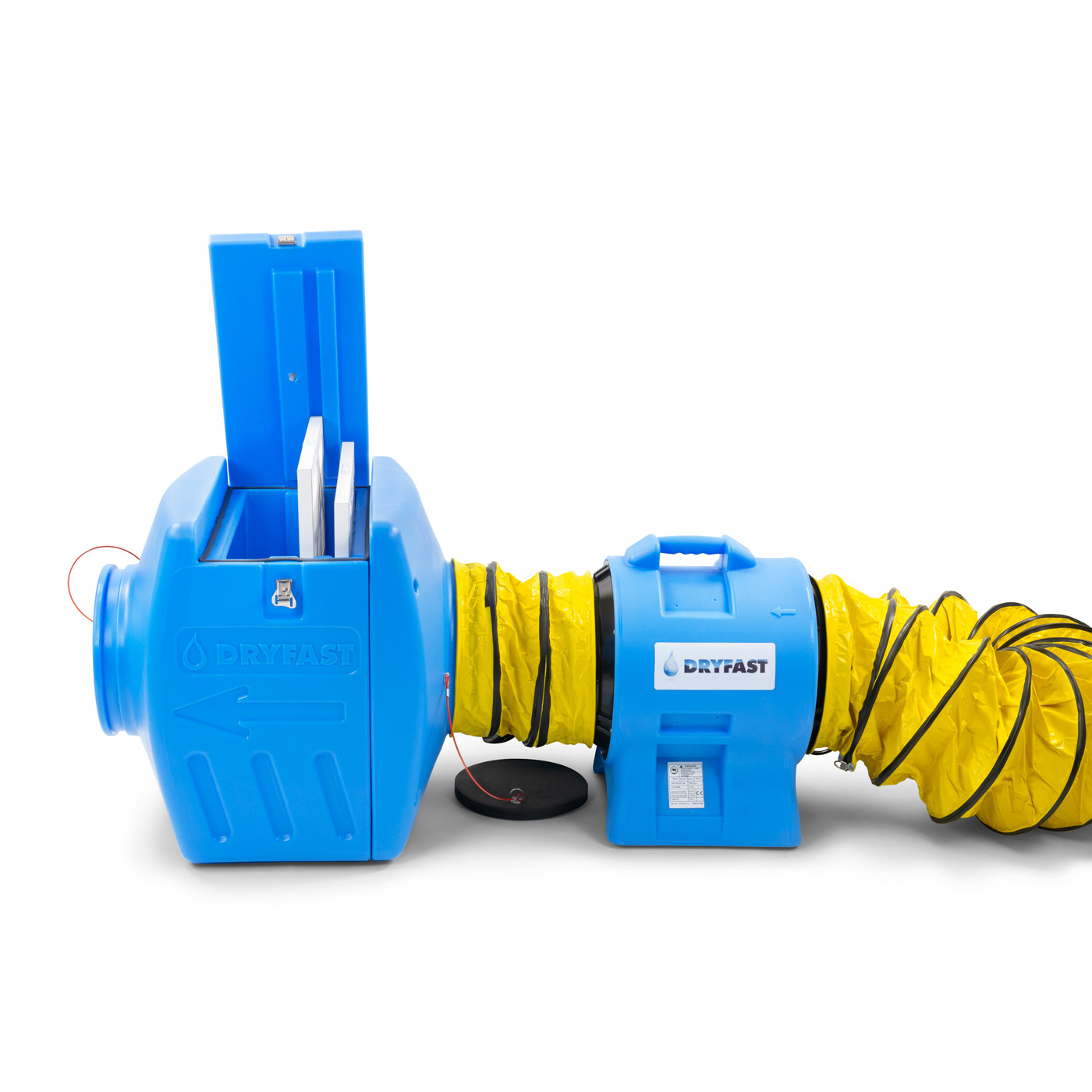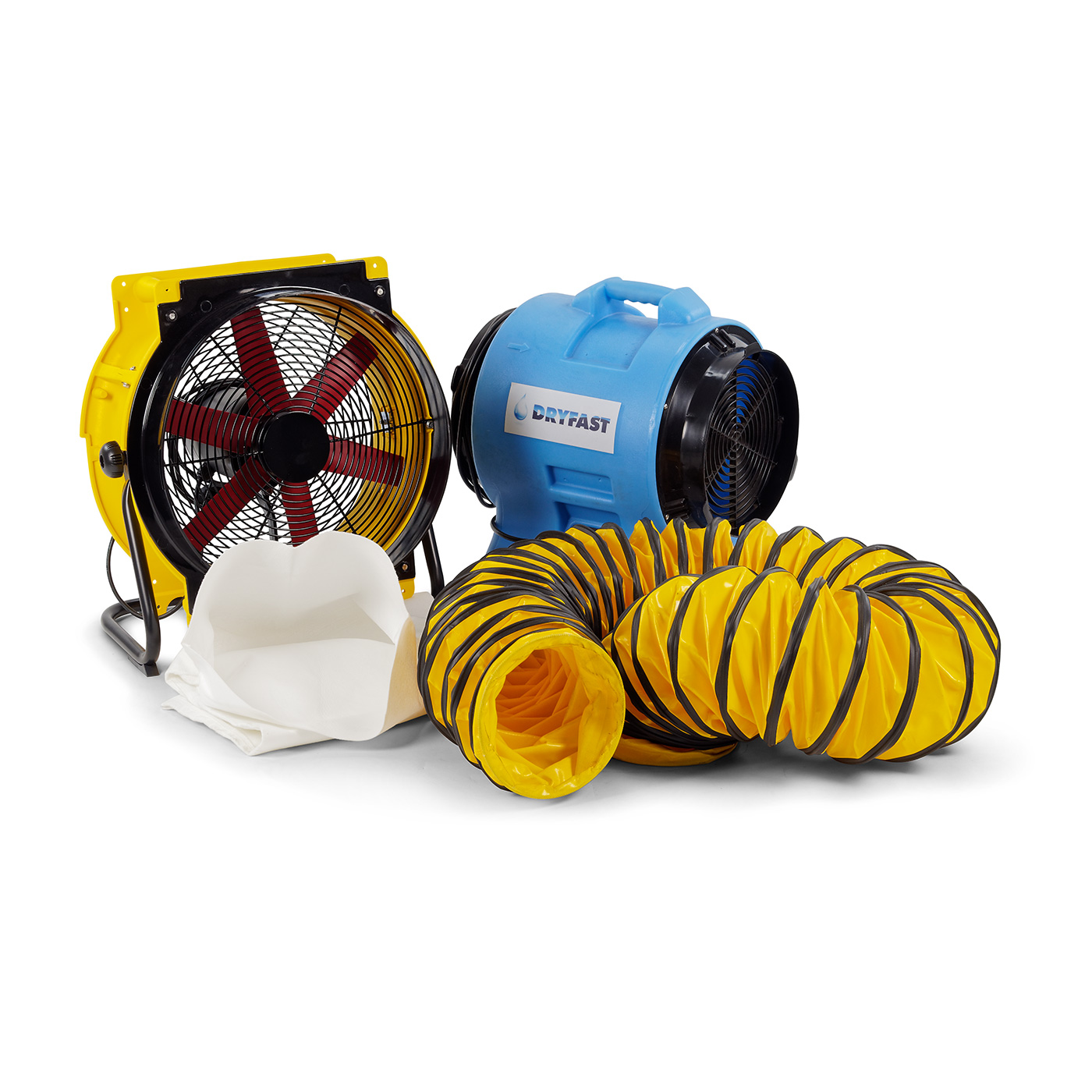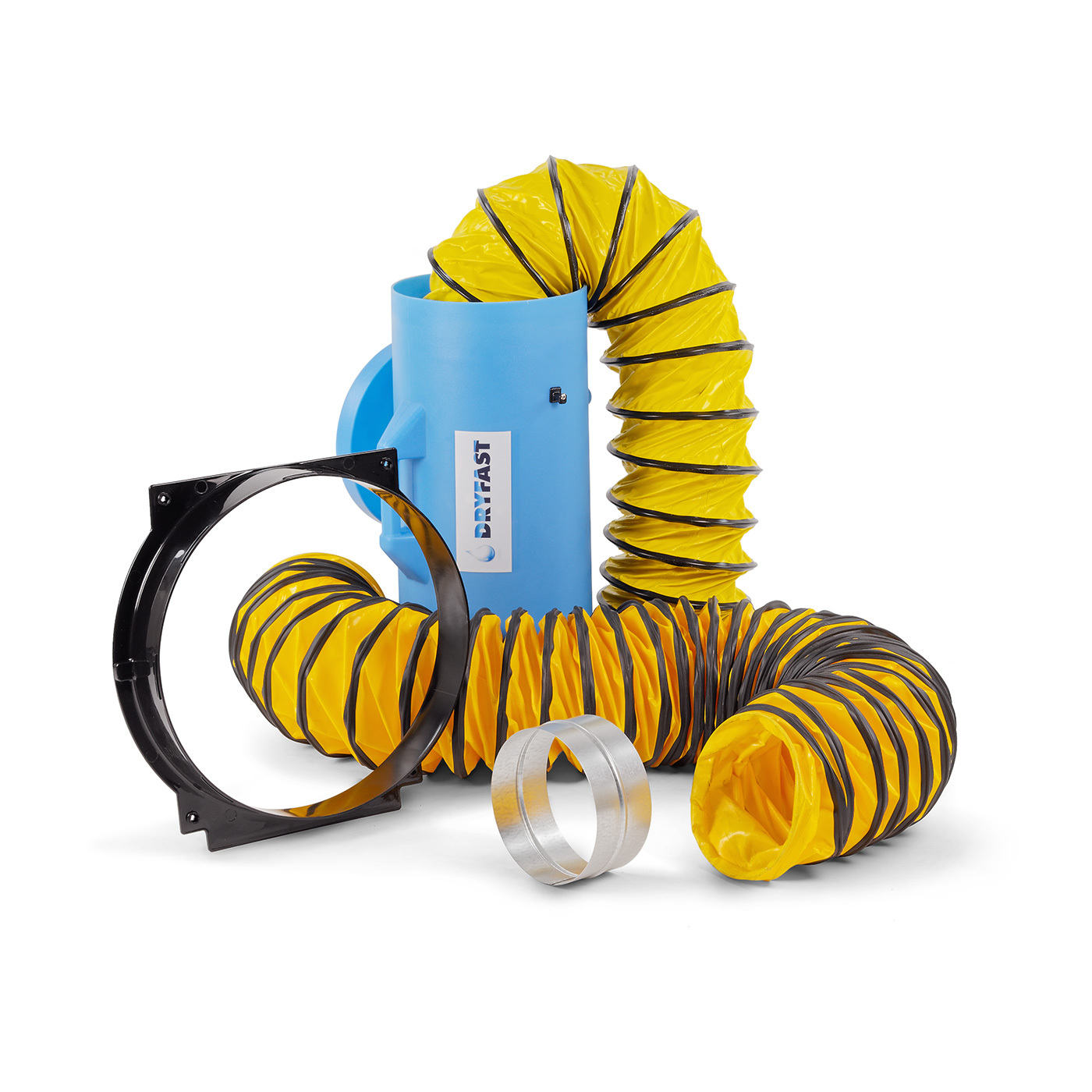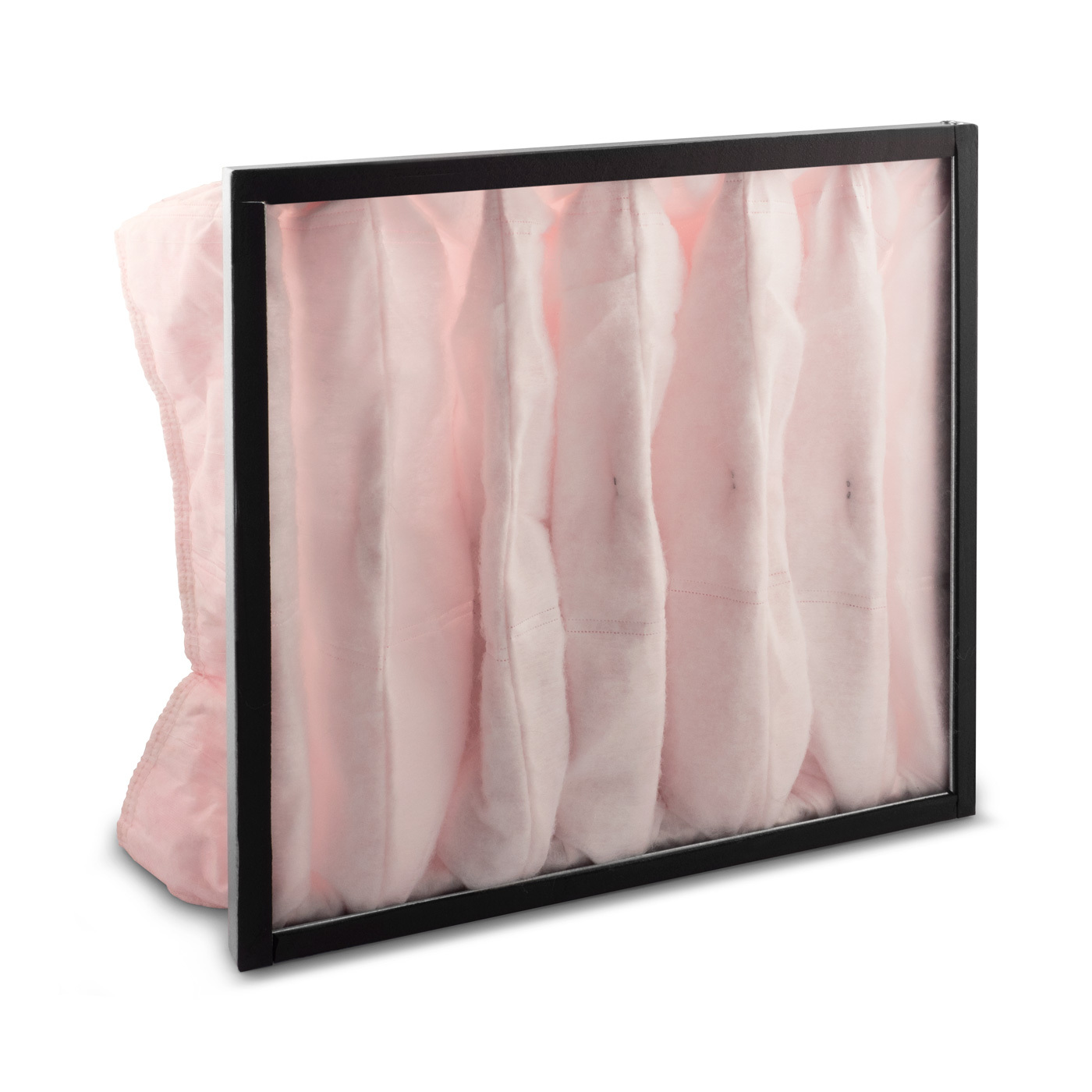Avoid health problems with dust control
Both construction and renovation will always require some degree of dust control.
The first question is whether suction can be applied to the source. When this does not suffice, room extraction is usually applied due to its easy applicability and the large amount of air that is extracted at high speed and filtered at the F7/EU7 level at a minimum.
The major benefit of room extraction, as we recommend it, is working with negative pressure. Proper application of the negative pressure principle will prevent dust from entering adjacent rooms. If the room is too large for negative pressure to be created, so-called temporary screens can be used, available in several varieties.
Another reason for applying dust control is to provide both workers and the principal with a cleaner work environment. Plus, principals require dust control more and more in order to avoid unnecessary nuisance and cleaning time.
When to apply dust control?
Many construction materials contain quartzite. Activities such as sawing, grinding or chopping will cause these quartzite-containing materials to release quartz dust. With time, inhalation of this hazardous dust may cause various lung diseases. In order to limit the risk of occupational disease to a minimum, it is important that hazardous materials are handled properly.

Machines are widely deployable



May avoid hefty fines



Certainly contributes to your good health



Generates positive word of mouth



Machines are widely deployable



May avoid hefty fines



Certainly contributes to your good health



Generates positive word of mouth
The danger of (construction) dust
Workers who are routinely exposed to quartz dust suffer an elevated risk of developing pneumoconiosis. Quartz dust settles in the alveoli, causing them to lose their ability to absorb oxygen (due to increased rigidity). This causes shortness of breath, among other things. By ensuring proper protection against such dust while working with construction materials, you can help avoid (major) dust-related health issues in the future.
People are not only exposed to dust in the construction industry. A lot of dust is released in wood processing as well, when sawing or milling MDF or other materials such as muliplex or solid wood. It should be noted that the processing of MDF releases a lot more and finer dust than the processing of multiplex or solid wood types. Exposure to wood dust may cause allergic skin reactions as well as pulmonary diseases and inflammation of the conjunctiva.
Of course, extraction by the source is preferred where possible. But in practice, it can be difficult to apply and may not suffice as a result. In these cases, the desired level of dust control may be achieved with dust extraction units.




